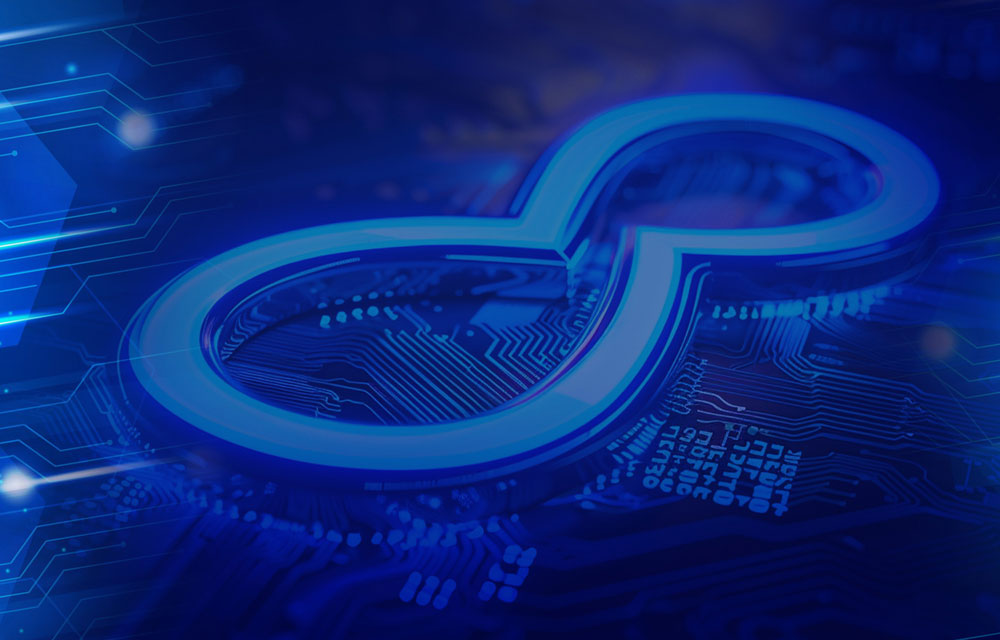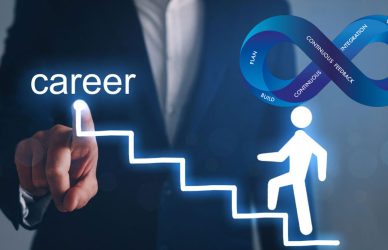AI and ML are being deeply integrated into DevOps workflows through tools like AIOps platforms (e.g., Splunk, Dynatrace, Moogsoft), predictive analytics, and intelligent automation. These technologies streamline operations, reduce manual effort, and improve decision-making.
1. Intelligent Monitoring and Observability
Transformation: Traditional monitoring relies on static thresholds and manual dashboards, which struggle with the scale of cloud environments. AI-driven tools analyze massive datasets (logs, metrics, traces) in real-time to detect anomalies, correlate events, and provide root cause analysis.
Example: Dynatrace identifies performance bottlenecks in a Kubernetes cluster, pinpointing a misconfigured pod before it causes downtime.
Impact: DevOps engineers spend less time sifting through logs and more time optimizing systems. AIOps tools reduce mean time to detection (MTTD) and resolution (MTTR) by up to 50% (Gartner).
Tools: Splunk, New Relic, Datadog, Prometheus with ML extensions
2. Predictive Incident Management
Transformation: ML models predict potential failures by analyzing historical data and patterns, enabling proactive fixes. AI can forecast resource exhaustion or traffic spikes, prompting auto-scaling.
Example: AWS Forecast predicts application demand, allowing teams to adjust EC2 instances. Moogsoft flags unusual API latency, preventing outages.
Impact: Shifts DevOps from reactive firefighting to proactive prevention, improving system uptime and user experience.
Tools: Moogsoft, ServiceNow ITOM, AWS Forecast, Azure Machine Learning
3. Automated Remediation
Transformation: AI-driven automation resolves issues autonomously by triggering predefined workflows or learning optimal responses.
Example: PagerDuty’s Rundeck suggests and executes remediation, such as restarting a failed container in Kubernetes.
Impact: Reduces on-call burden and human error, allowing teams to focus on strategic initiatives.
Tools: Rundeck, Ansible with AI plugins, AWS Systems Manager
4. Optimized CI/CD Pipelines
Transformation: AI enhances CI/CD by predicting build failures, prioritizing tests, and analyzing code for high-risk commits.
Example: GitLab Auto DevOps recommends pipeline improvements like parallel test execution. LaunchDarkly uses AI for intelligent feature flag management.
Impact: Accelerates release cycles, improves software quality, and supports rapid deployment.
Tools: Jenkins with ML plugins, GitHub Copilot, CircleCI Insights
5. Security and Compliance (DevSecOps)
Transformation: AI strengthens DevSecOps by detecting vulnerabilities, predicting threats, and enforcing compliance.
Example: AWS Security Hub flags unauthorized IAM changes. Snyk identifies vulnerable dependencies in Docker images.
Impact: Embeds security into DevOps workflows, reducing risk and improving compliance.
Tools: Snyk, Prisma Cloud, AWS Security Hub, Azure Sentinel
6. Resource Optimization and Cost Management
Transformation: AI analyzes usage patterns to optimize cloud spending, reduce resource waste, and suggest cost-saving strategies.
Example: AWS Cost Explorer recommends resizing RDS instances, saving 20–30%. CloudHealth predicts future costs from usage trends.
Impact: Helps balance performance and cost efficiency in cloud-native environments.
Tools: CloudHealth, AWS Cost Explorer, Azure Cost Management
7. ChatOps and Collaboration
Transformation: AI-powered chatbots automate routine tasks and integrate system interactions within communication platforms.
Example: A Slack bot powered by Grok retrieves CloudWatch metrics or triggers pipelines.
Impact: Reduces context-switching and enhances efficiency in distributed DevOps teams.
Tools: Slack with Botkube, Microsoft Teams with Azure DevOps integrations, Grok
Skills Needed to Adapt to AI-Driven DevOps
Technical Skills
1. AI and ML Fundamentals
Why: Understanding concepts like anomaly detection and supervised learning is key to configuring AIOps tools.
How to Learn: Courses like Andrew Ng’s “Machine Learning” on Coursera or “ML for DevOps” on AWS Skill Builder.
Example: Use ML models in Datadog to detect outliers.
2. Proficiency with AIOps Platforms
Why: Tools like Dynatrace and Splunk are standard in incident response and monitoring.
How to Learn: Practice via sandboxes or free trials (e.g., Dynatrace University).
Example: Correlate logs and metrics in Dynatrace for microservices.
3. Data Analysis and Visualization
Why: AI relies on interpreting large datasets effectively.
How to Learn: Practice SQL, Python (pandas), and tools like Grafana.
Example: Parse CloudWatch logs and visualize trends.
4. Advanced Automation with AI Integration
Why: Scripting and orchestration tools power AI-driven remediation.
How to Learn: Build Ansible playbooks with ML APIs; use AWS Lambda.
Example: Trigger auto-scaling via Lambda based on AWS Forecast predictions.
5. Cloud-Native AI Services
Why: Leveraging services like AWS SageMaker enables smarter automation and monitoring.
How to Learn: Pursue certifications or experiment with free-tier offerings.
Example: Predict traffic spikes using Azure ML for AKS clusters.
6. Security with AI Tools
Why: Understanding how AI identifies threats enhances DevSecOps.
How to Learn: Explore Snyk, Prisma Cloud docs; take Udemy’s DevSecOps courses.
Example: Use Prisma Cloud to detect Terraform misconfigurations.
Soft Skills
1. Adaptability and Continuous Learning
Why: The AI/DevOps landscape evolves fast.
How to Demonstrate: Share stories of self-learning new tools or staying current with trends.
Example: Learned Splunk in a month to support monitoring efforts.
2. Collaboration and Communication
Why: AI-driven DevOps is often cross-functional.
How to Demonstrate: Explain AIOps clearly and collaborate with teams like data science or security.
Example: Worked with ML engineers to integrate anomaly detection in CI/CD.
3. Critical Thinking and Problem-Solving
Why: AI outputs require validation and action.
How to Demonstrate: Share troubleshooting cases involving AI predictions.
Example: Identified and corrected a false positive from an AIOps tool.
4. Business Acumen
Why: AI-DevOps impacts costs, uptime, and customer experience.
How to Demonstrate: Discuss measurable outcomes of your work (e.g., savings, SLA improvements).
Example: Reduced cloud spend by 25% using AWS Cost Explorer ML suggestions.
Career Implications and Opportunities
New and Evolving Roles
AIOps Engineer
Skills Needed: Splunk, Dynatrace, Python, cloud monitoring
Example Task: Configure Moogsoft to reduce alert fatigue.
ML-Driven DevOps Engineer
Skills Needed: AWS SageMaker, Kubernetes, CI/CD
Example Task: Integrate ML to prioritize test runs in CI.
Cloud Cost Optimization Specialist
Skills Needed: CloudHealth, AWS Cost Explorer, data visualization
Example Task: Implement ML-based resource rightsizing.
Impact on Existing Roles
-
Cloud Engineers: Must learn tools like AWS Anomaly Detection.
-
DevOps Engineers: Need AIOps skills for predictive analysis.
-
SREs: Use AI to reduce toil and improve SLA adherence.
Opportunities
-
Higher Demand: IDC predicts 60% of enterprises will use AIOps by 2026.
-
Better Salaries: AI + DevOps roles often command $120K–$160K in the U.S.
-
Leadership Potential: Expertise in AI tools makes you a modernization driver.
How to Get Started
-
Learn the Basics: Start with free courses (e.g., Google’s ML Crash Course).
-
Hands-On Practice: Use free trials (e.g., Datadog, Splunk) to build dashboards.
-
Certifications:
-
AWS Certified Machine Learning – Specialty
-
Google Cloud ML Engineer
-
Splunk Core Certified User
-
-
Build a Portfolio: Showcase GitHub projects like ML-based auto-scalers.
-
Stay Updated: Follow #AIOps on X and join communities like AIOps Exchange.
-
Apply to Roles: Target companies actively integrating AIOps (e.g., Netflix, Amazon).
Conclusion
AI and ML are reshaping DevOps with smarter monitoring, predictive incident handling, and cost-efficient resource management. To stay competitive, professionals must master AIOps platforms, automation scripting, and cloud-native ML services. By embracing continuous learning and demonstrating real-world impact, you can become a leader in the next generation of DevOps.






